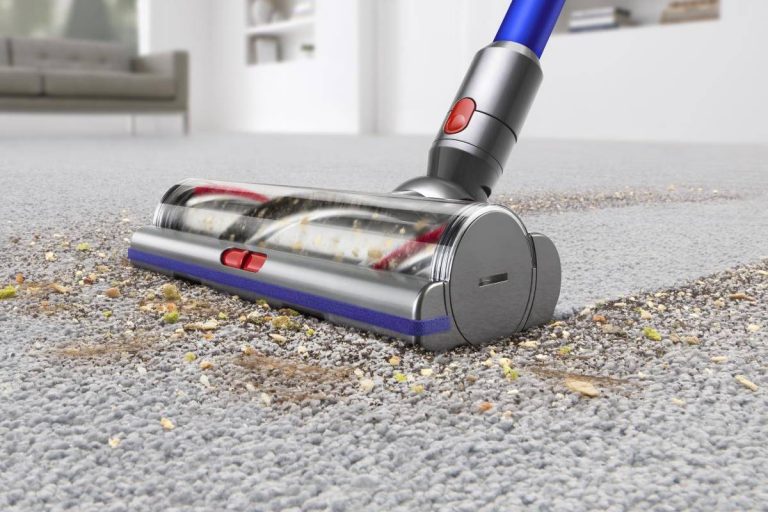If your old cleaner has given up on you, then it’s time to invest in a new one before your home becomes full of dust and debris. But, simply searching on the internet for vacuum cleaners will bring up hundreds and thousands of options, making it difficult to know which is the right one for your home.
There are many different kinds of vacuums available, each with its own set of features and technological advancements. Even models from the same manufacturer differ a lot. Take Dyson vacuum models, for instance. Models from different series vary in the amount of dirt they can hold, their operating time, charging time, and suction power.
So, how do you pick the right model with so many variables to choose from?
It’s easy.
You just have to look out for the following features:
Type of vacuum & your flooring
Based on whether you have hard floors, ultradecks, carpeting, or both, you first need to decide between upright and canister vacuum cleaners. Generally, upright vacuum cleaners are the best option for homes that mostly have carpeting.
Of course, this doesn’t mean you can’t choose a canister vacuum. If the canister model you have in mind features a floor nozzle, height adjustment options, and a motorized brush roll, you can use it for carpets, too.
But, in general, canister vacuums are more suited for tile and hardwood flooring or if you have low-pile carpeting. Since they are maneuverable, you can use them underneath and around different furniture pieces and in tight corners and use the accompanying floor tools to clean scatter rugs.
But what really is the difference between the two kinds of vacuum?
Upright vacuums feature a motor for suction and a brush roll to get stubborn dirt out. They are great for synthetic carpets like those made of polyester, nylon, and olefin. You can turn off the revolving brush in some models and use them to clean smooth floors. Integrated hoses and onboard attachments add versatility to upright vacuums.
However, upright vacuums can’t beat the versatility of canister vacuums. Apart from carpets and floors, you can use them for other surfaces above floor level, and this is because of the cleaning tools used with a wand and hose.
Bag vs. bagless
This usually comes down to personal preference and doesn’t really affect the vacuum cleaner’s performance. But if you or any of your family members have asthma or allergies, it’s better to go with a vacuum cleaner with a bag. Such a model also keeps the indoor air clean, and you won’t have to worry about being exposed to dust while cleaning.
While a bag or lack thereof doesn’t make much of a difference in how well the vacuum cleans, bagless vacuum cleaners have some disadvantages. You will still have to remove the dust container and empty it into a bag to throw away, which can release some of the dust and dirt you just spent time collecting.
Bagless vacuums also usually use filters that you need to clean periodically, which can be a bit of a hassle.
Size & Features
When purchasing a vacuum, you need to think about the weight and height of the cleaner and the extras it comes with, like a dusting brush, mattress attachment, and an extension wand. While you won’t necessarily need these extras in most cases, they’re still nice to have. Plus, they add value to your money since you won’t have to invest in them separately when you do need them.
The weight of the machine is important because if you end up buying a heavy one, it’ll be difficult to lug it from your supply closet to your room and vice versa. As for the height, you should make sure you don’t have to bend too much or you can fit it on a countertop to not risk a backache when cleaning.
The dimensions are also important because if you opt for a large, bulky machine, storing it might become an issue.
Noise
You need to consider the amount of noise the vacuum makes, especially since loud noise can give you a headache. In particular, you need to be mindful of the noise if you have pets because they can get scared easily.
Full-sized vacuums can make up to 80 decibels of noise, which is nearly equal to the amount of noise that garbage disposals make. Manufacturers usually list the sound level of their machine on their website or in the user manual. Ideally, you should go for a model that makes less than 70 dB.
Power
If your vacuum is not powerful enough, it won’t keep your home clean. To determine how powerful your vacuum is, take a look at the watts. Like the noise level, the power rating will be listed on the manufacturer’s website or the user manual.
Small vacuums are usually rated at 250 watts, while more powerful vacuums are usually about 3000 watts. If you can’t figure out what power rating suits your needs, you can go for something with an average power rating of around 1000 watts.
Filters
The filter is an important part of the vacuum cleaner since it collects dust and dirt. With time, as you clean more and more, the filter becomes saturated with dust, so you either need to wash them or replace them. If you choose a vacuum with a filter that’s hard to take out to clean and replace, you will eventually stop using it. Plus, smaller filters need to be changed more frequently, so make sure you keep that in mind.
Shop wisely!
You might have realized that buying a vacuum cleaner is not as straightforward as it seems. You need to look at many factors, make a list of potential models you can invest in, and then make the purchase. We recommend starting off with setting a budget and then looking at vacuum cleaners that fall in this budget to make it easier for you to choose.

